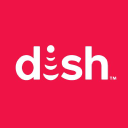Higher Carriage Fees Unlikely to Hurt Dish Network
Dish Network (NASDAQ:DISH) is the third largest pay TV provider in the U.S. Dish competes with DirecTV (NASDAQ:DTV), AT&T (NYSE:T), Comcast (NASDAQ:CMCSA), Time Warner Cable (NYSE:TWC), Verizon (NYSE:VZ) and others in the pay-TV market.
TV content producers are currently pressuring pay-TV providers to pay higher carriage fees for programming. Recent examples include Dish Network’s recent carriage fee disputes with Disney and with a Fox affiliate station in Charlotte, N.C. We can expect these disputes to multiply because many of the contracts between networks and service providers are expiring in 2010.
We forecast a minor downside of 1% to our $26.55 estimate for Dish Network’s stock if it pays higher carriage fees while simultaneously continuing to offer free HD channels on a promotional basis. On the other hand, we forecast a 4% upside for Dish in the more likely event that the company is able to pass the fee increases on to its subscribers. Our analysis follows below.
- With Echostar Merger Approaching, What To Expect From Dish’s Q3 Results?
- Can Dish Network Stock Return To Its Pre-Inflation Shock Highs?
- Dish Stock Has Big Upside Potential To Its Pre-Inflation Peak
- How Will The Cyber Attack Impact Dish’s Q1 Results?
- Is Dish Network Stock A Buy Despite Many Headwinds?
- Will Dish Network Stock Continue To Underperform?
Slump in advertising due to weak economy and rise in internet media is eroding profits for TV networks
Broadcast and cable TV networks have witnessed declines in advertising revenues due to a weak economy and the rise of Internet media. As their profits erode, the networks are trying to compensate by charging higher fees to carriers like Dish Network for carrying their programming.
Compared to cable networks, broadcast networks (like ABC, NBC, CBS, Fox) are more exposed to the weak ad market because they currently don’t benefit from a second stream of carriage revenues. As a result, broadcast networks have been especially aggressive in pushing for higher fees from pay-TV providers that retransmit their content.
Dish can mitigate the negative impact of higher carriage fees by passing on the costs to its subscribers. As shown in the chart below, we currently expect Dish’s subscriber fees to decline slightly over our forecast period, primarily as a result of competitive pressures. If Dish’s were to pass the higher costs associated with programming content, this could negatively impact Dish’s subscriber growth.
You can modify the chart below to see how carriage fee increases impact Dish Network’s stock:
Dish’s margins could suffer from higher fees…
So far, Dish and other pay-TV providers have resisted pressure to raise the carriage fees that they pay, arguing that increased fees will hamper their ability to offer promotions and generally keep their pricing competitive. For example, Dish currently offers free HD channels to new subscribers. Dish’s margins could suffer if it continues to offer free HD while simultaneously paying higher fees to retransmit Disney’s HD channels.
If Dish’s HD service margins decline due to higher fees instead of growing as we forecast, Dish’s stock could suffer a small downside of 1%.
You can see the complete $26.55 Trefis price estimate for Dish Network’s stock here.
